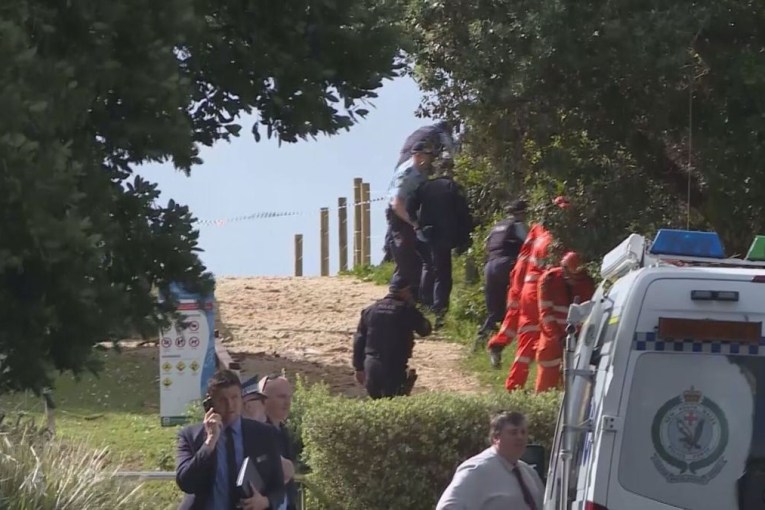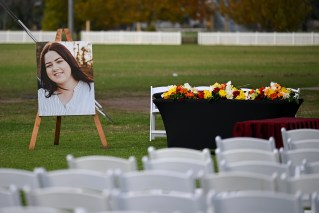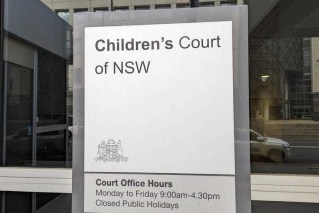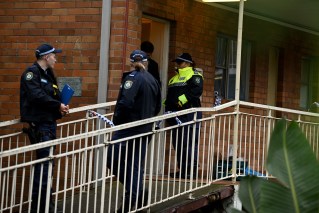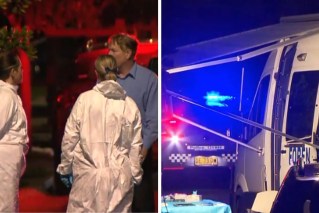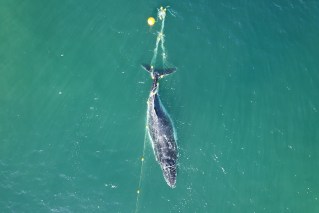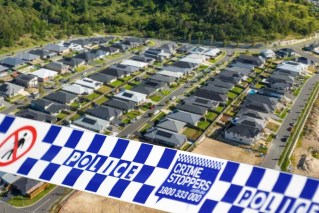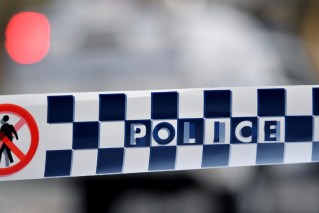Dozens of fires burn in NSW, as ‘horror summer’ looms

Source: Bureau of Meteorology
NSW Premier Chris Minns has warned a “horror summer” looms in his state, as dozens of blazes burned on a second day of total fire bans.
The NSW Rural Fire Service said 65 fires were burning across the state at 1pm Wednesday, including 19 that were yet to be contained.
They include an out-of-control grass fire within three kilometres of Tenterfield, a regional town of 4000 people in northern NSW.
Its alert level was upgraded to “watch and act” on Wednesday afternoon. The fire is burning east towards Millers Lane and the RFS said residents should prepare, and follow their bushfire survival plan.
Tenterfield resident and Carpe Diem guesthouse owner Kat Davis said said she could see smoke and flames about a kilometre from her house but she was not concerned.
“The winds are not too bad. We’re looking at a north-westerly, so it should push it out into the scrub soon. There are still a few properties out that way but not as many as where I am,” she told the Nine papers.
The RFS said forecast high winds were expected to strengthen as a cool change approached in the afternoon.
Mr Minns said he was concerned about the unseasonably high temperatures across much of NSW this week, given spring had only jsut started.
“It’s September and we’re already experiencing four days in a row of temperatures above 30 degrees with high winds,” he said.
“We are concerned about summer.”
Mr Minns said NSW was “behind” in hazard reduction burns because of poor winter weather. Sydney was blanketed in smoke for much of last week due to controlled burns.
“I think the public would understand that you need perfect conditions when you’re going to undertake a hazard reduction,” he said.
“The wind has to be low, it can’t be too hot, because ironically enough, despite everyone’s best intentions, they’re inherently dangerous.”
Source: NSW RFS
Wednesday brought “extreme” fire danger warnings for the greater Hunter and greater Sydney regions, with a “catastrophic” warning – the worst of the four-level fire alerts – for the far south coast.
Total fire bans were imposed for Sydney, the Hunter and Upper Central West Plains.
Parts of three Sydney national parks were all closed as a precaution on Wednesday. Tracks, trails and visitor precincts were closed at Ku-ring-gai Chase National Park east of Cowan Waters, Garigal National Park and Sydney Harbour National Park north of Sydney Harbour.
The hot, dry and windy weather forecast for Wednesday also prompted the Bureau of Meteorology to issue an extreme fire danger warning for the Hunter and Sydney, until a southerly change is due on Wednesday night.
The unseasonably hot and dry conditions are being felt across southern Australia, with temperatures peaking at 8-16 degrees above average across much of South Australia, NSW and Victoria.
Sydney was tipped to hit 35 degrees on Wednesday before the cool change started to move up the south coast in the afternoon.
Mr Minns urged NSW residents to make sure they were prepared for the upcoming fire season.
“It’s a good warning to the communities of NSW to have a fire preparation plan in place for the summer that’s coming up,” he told ABC News.
“It’s important for every community, we want to make sure that lives and property are safe during the summer period.”
Tweet from @NSWRFS
Tasmanian dangers ease
The ongoing alarm in NSW comes after about 100 people were forced to spend a night in their cars after a bushfire on Tasmania’s east coast prompted evacuations and cut off the only road to a tourist town and national park.
The wildfire near Coles Bay Road at Friendly Beaches sparked an emergency warning on Tuesday afternoon.
It has since burned about 700 hectares, fanned by strong winds. It was downgraded to watch-and-act level on Wednesday, with authorities confident they could get on top of the blaze in cooler conditions.
Residents and campers were earlier forced to evacuate, with many spending the night about 20 kilometres south at Coles Bay – the gateway to the picturesque Freycinet National Park and peninsula.
The town’s boat ramp was a designated safe place.
“I accept that people were uncomfortable overnight,” Tasmania Fire Service deputy chief officer Matthew Lowe said.
“I’d much prefer people sleeping in their cars at a nearby safer place than being on the road when trees are falling down.
“The fire crossed Coles Bay Road over a three-and-a-half-kilometre front … very dangerous conditions.”
Coles Bay Road, the only route in and out of the town, remained closed to the general public on Wednesday afternoon.
Some residents have been allowed to pass with a police escort but the road won’t be fully reopened until a safety inspection has been completed and hazards removed.
Greg Ross, owner of Freycinet Air Tasmania, which is situated between Coles Bay and the fire, chose not to evacuate but said he endured a nervous night.
“You had a good glow [from the fire] … but the wind seemed to keep it on the right side of things. It could have been a lot worse,” he said.
“It was some of the strongest winds I’ve experienced around here. It was getting real gusty, where the walls were shaking.
“It is a bit of an eye opener for the [bushfire] season that’s for sure.”
There were gusts of more than 100km/h an hour overnight.
More than 700 properties at Coles Bay were without power on Wednesday morning because of fallen lines.
There have been no reports of property damage or injuries, with the cause of the fire under investigation.
About three millimetres of rain fell on the fireground on Tuesday night, helping to dampen fuel loads.
-with AAP
